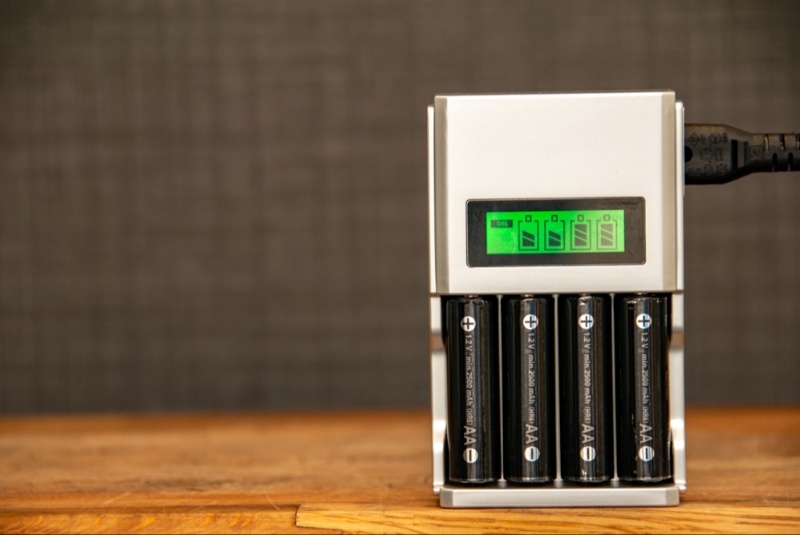In an era where technology is virtually an extension of ourselves, rechargeable batteries emerge as the unsung heroes of our digital lives. From powering the remote control to keeping our essential gadgets running, these small powerhouses are integral to our daily routine. However, not all rechargeable batteries are created equal. Selecting the best ones for your devices is crucial for optimal performance and sustainability. This ultimate guide will illuminate the path to choosing the best rechargeable batteries, ensuring your devices are powered efficiently and effectively.
Understanding Rechargeable Batteries
Before diving into the selection process, it's essential to understand what rechargeable batteries are and how they differ from their disposable counterparts. Rechargeable batteries come in several chemistries, including Nickel-Metal Hydride (NiMH), Nickel-Cadmium (NiCd), Lithium-Ion (Li-ion), and Lithium Polymer (LiPo), each with unique characteristics and applications.
1. Nickel-Metal Hydride (NiMH):
These are widely used due to their relatively high capacity and low memory effect, meaning they can be charged before being fully discharged without losing maximum energy capacity.
2. Nickel-Cadmium (NiCd):
Once the standard, NiCd batteries have fallen out of favor due to their pronounced memory effect and environmental concerns related to cadmium.
3. Lithium-Ion (Li-ion) and Lithium Polymer (LiPo):
These are common in portable electronics due to their high energy density and light weight. LiPo batteries offer even more flexibility in shape and size, making them ideal for modern slim devices.
Capacity and Power Requirements
When choosing rechargeable batteries, it's important to consider the power requirements of your device. This is typically measured in milliampere-hours (mAh), which indicates the energy charge that a battery can hold and deliver over time.
- For high-drain devices like digital cameras, gaming controllers, or flashlights, you'll want batteries with a higher mAh rating.
- For low-drain devices such as clocks or remote controls, a lower mAh rating is usually sufficient.
Cycle Life and Longevity
The cycle life of a battery is the number of complete charge and discharge cycles it can undergo before its capacity drops to a certain percentage of its original capacity. NiMH batteries, for instance, typically have a cycle life of several hundred to a thousand cycles.
Longevity is not just about the number of cycles but also how the battery maintains its capacity over time and use. Higher quality batteries tend to maintain their capacity for more cycles compared to cheaper alternatives.
Charging Speed and Maintenance
Some batteries can be charged rapidly, while others may require several hours. Fast charging can be convenient, but it's also important to consider the long-term effects on battery health. In some cases, slower charging helps prolong battery life.
Maintenance is another consideration:
- NiCd batteries require regular discharging to avoid memory effect.
- NiMH batteries are less demanding but may still benefit from an occasional complete discharge.
- Li-ion and LiPo batteries generally have no memory effect but can degrade if frequently discharged fully.
Brand Reputation and Reviews
Not all battery brands are created equal. Some have built a reputation for reliability and longevity, while others have not. It’s wise to do your research, read reviews, and consider the experiences of others. Often, spending a bit more on a reputable brand can save money in the long run by providing a better cycle life and consistent performance.
Environmental Impact and Recycling
The environmental impact of batteries is two-fold: the resources used in their manufacture and their disposal. Rechargeable batteries already offer a greener alternative to disposables by reducing the number thrown away. Still, choosing batteries with a longer life span and supporting brands that use less toxic materials can amplify your environmental efforts.
Furthermore, proper disposal is critical. Many localities have specific recycling programs for batteries, ensuring harmful substances do not end up in landfills.

Price vs. Performance
It's tempting to go for the cheapest option, but with rechargeable batteries, the adage "you get what you pay for" often holds true. Investing in higher-quality batteries can lead to better performance and longer-term savings as they need to be replaced less frequently.
Compatibility and Size
Ensure the batteries you choose are compatible with your device and charger. Some devices require a specific voltage or shape that not all battery types can provide.
Also, physical size matters. Even among standard sizes like AA or AAA, slight variations can affect whether the battery fits well in your device.
Capacity Retention and Self-Discharge
Some rechargeable batteries, especially NiMH types, can lose charge when not in use, known as self-discharge. Newer generations, like low self-discharge NiMH batteries, can retain their charge for much longer, making them ready for use even after months of storage.
Safety Features
Safety is paramount. Look for batteries with built-in protections against overcharging, overheating, and short-circuiting. These features can prevent damage to both the battery and your device.
Certifications and Standards
Rechargeable batteries that adhere to international standards and certifications (like UL, CE, and RoHS) have been tested for safety and performance, providing an extra layer of assurance.
Smart Chargers
Pairing your rechargeable batteries with a smart charger can enhance their lifespan. Smart chargers can adjust the charging rate based on the battery's condition and cut off power when the battery is full.
Best Practices for Use and Storage
To maximize the life and performance of your rechargeable batteries:
- Avoid extreme temperatures during use and storage.
- Store batteries with a partial charge in a cool, dry place.
- Follow the manufacturer’s guidelines for charging and maintenance.
The quest for the best rechargeable batteries is not just about purchasing power—it's a commitment to sustainable and efficient energy use for our everyday technology. By considering the factors outlined in this guide, consumers can make informed decisions that benefit both their devices and the environment.
While the initial investment in high-quality rechargeable batteries may seem steep compared to disposable ones, the long-term savings and reduced environmental footprint are worth the cost. Remember, the best rechargeable battery for your needs will balance capacity, cycle life, charging speed, and maintenance with your specific device requirements and usage patterns.
In a world where the appetite for energy is ever-growing, choosing the right rechargeable batteries is a small but significant step toward a more sustainable and empowered lifestyle. Your gadgets are an extension of your potential—fuel them wisely.




